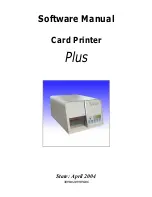
26
Elements of Card Design
Backgrounds
Use
the
following
suggestions
to
help
you
select
a
background
for
a
professional
‐
looking
card.
For
best
results,
make
sure
the
background
design
does
not
emphasize
the
location
of
card
features,
such
as
embedded
electronics.
•
Consider
using
a
white
background
for
the
card
to
achieve
consistent
professional
results.
•
Consider
using
smaller
blocks
of
color,
patterned
areas,
or
gradients
to
highlight
printed
card
features
such
as
a
name,
photo,
or
logo.
•
Avoid
using
a
solid
‐
color
background
or
halftone
over
a
large
area
of
the
card.
It
can
show
flaws
on
the
card
(such
as
an
uneven
surface)
or
the
location
of
card
features
(such
as
a
smart
card
chip).
•
Avoid
halftones,
especially
gray,
which
can
highlight
the
location
of
card
features
and
flaws.
Image Placement
Use
the
following
suggestions
to
help
you
locate
important
images,
such
as
a
photo,
logo,
or
bar
code.
When
placing
images,
avoid
uneven
areas
and
areas
of
high
wear,
which
can
result
in
inconsistent
quality.
•
Do
not
place
an
important
image
on
the
front
of
the
card
in
the
same
area
as
a
magnetic
stripe
or
other
machine
‐
readable
feature.
Frequent
use
of
a
card
in
a
reader
can
wear
away
the
image
on
the
opposite
side
of
the
card.
•
Do
not
place
an
important
image
directly
on
the
other
side
of
a
signature
panel.
Residue
from
the
panel
can
cause
printing
problems
on
an
adjacent
card.
Place
the
image
above,
below,
or
to
the
side
of
the
panel.
•
Do
not
place
an
important
image
directly
on
the
other
side
of
a
smart
card
chip.
The
card
might
not
be
as
flat
in
that
area,
and
printing
voids
can
occur.
Summary of Contents for CD Series
Page 4: ...iv...
Page 8: ...viii...
Page 22: ...14 Installation...
Page 40: ...32 Elements of Card Design...
Page 74: ...66 Printer Manager...
Page 86: ...78 Supplies and Parts...
















































